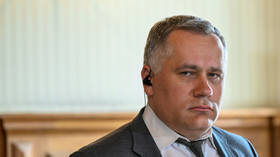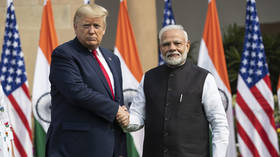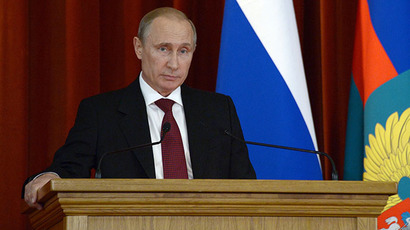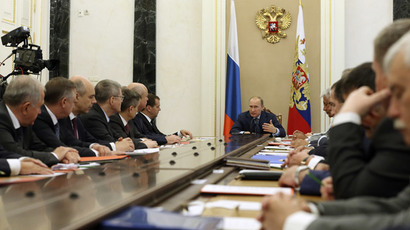NATO chief eyes more bases in E. Europe to confront Russia
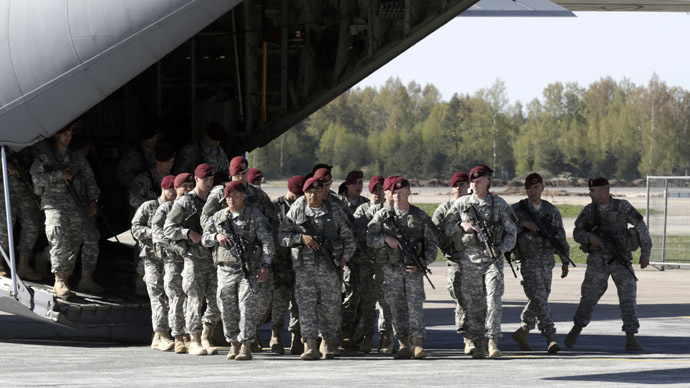
Under the pretext of an 'overt' Russian threat, NATO is pushing for a ‘readiness action plan’ that will bring the Cold War military bloc closer to Russian borders than ever - despite objections from some NATO members.
NATO Secretary-General Anders Fogh Rasmussen said the 28-nation military bloc, which meets next week in Cardiff, Wales, would attempt to overcome internal opposition and agree to the deployment of military bases near the Russian border.
Two NATO warships heading to Black Sea
Amid the ongoing Ukrainian conflict, which is fracturing the
country along east-west ideological lines, NATO is preparing to
install for the first time military “reception
facilities” in Eastern European countries, including Poland
and the three Baltic countries: Lithuania, Estonia and Latvia.
"We have something already called the NATO response force,
whose purpose is to be able to be deployed rapidly if
needed,” Rasmussen said in an interview with several
European newspapers. “Now it's our intention to develop what
I would call a spearhead within that response force at very,
very, high readiness. In order to be able to provide such rapid
reinforcements you also need some reception facilities in host
nations. So it will involve the pre-positioning of supplies, of
equipment, preparation of infrastructure, bases,
headquarters.”
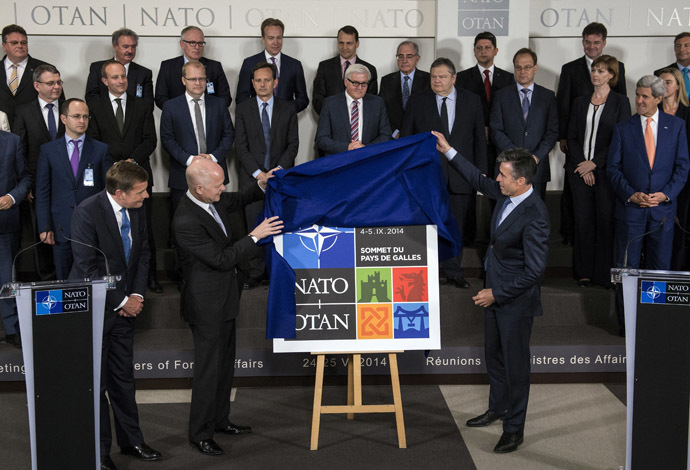
The bottom line, according to the NATO chief, is that there will
be “a more visible NATO presence in the east.”
Asked whether there would be permanent NATO presence in Eastern
Europe, he said, "The brief answer is ‘yes’. To prevent
misunderstanding, I use the phrase 'for as long as necessary'.
Our eastern allies will be satisfied when they see what is
actually in the readiness action plan."
Rasmussen, whose term expires on September 30, said the new NATO
forces in Eastern Europe could be “deployed within
hours.”
Needless to say, NATO's militarization of the region will not sit
well with Moscow, which has watched with increasing alarm since
the collapse of the Soviet Union - despite pledges from the
Western military bloc not to expand further east - as NATO
continues its march towards Russia's western border.
Currently, the Polish port city of Szczecin, which military
experts anticipate will serve as one of NATO’s new “reception
facilities,” represents NATO’s easternmost military
presence.
Ironically, NATO’s latest enlargement plans are being opposed not
just by Russia, but by its very members, some of whom do not see
the point in aggravating tensions with Moscow.
It should come as no surprise that the United States and the
United Kingdom, distant as they are from any potential fireworks
on the European-Russian border, favor a military escalation in
Eastern Europe. Other major NATO members, however, including
France, Spain and Italy, have expressed serious reservations to
the plans.
Meanwhile, Germany, NATO’s second strongest member, remains
uncommitted to the expansion plans.
This should come as no surprise considering the recent
deterioration in relations between Washington and Berlin.
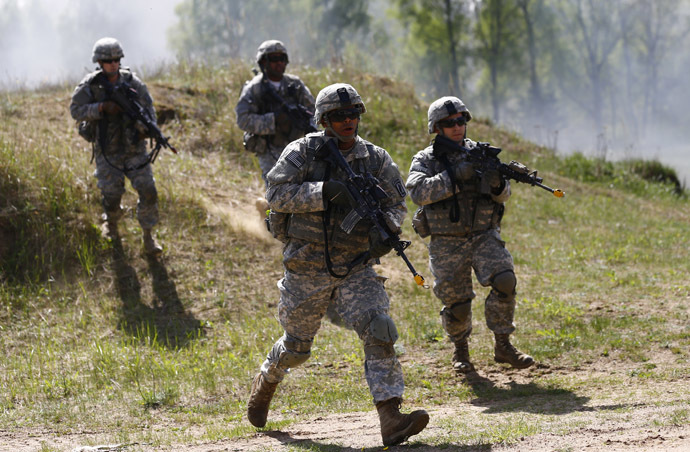
Germany was forced to take a critical new look at its powerful
American partner following Edward Snowden’s shocking NSA
revelations, which showed massive US and UK spying on German
citizens. Even Chancellor Angela Merkel’s personal mobile phone
was caught up in the international surveillance net.
Remarkably, Rasmussen asserted that Russia “does not consider
NATO a partner,” when it was NATO that flat-out refused
Russian participation in the controversial US missile defense
system, also planned for Eastern Europe. Such cooperation, had it
been given the green light, would have sealed the so-called reset
between the two Cold War-era foes, bringing to end years of
mutual suspicion and antagonism. Instead, the US and NATO opted
to keep Russia on the sidelines, ensuring nothing less than
another full-blown arms race.
Speaking on the subject of Crimea’s decision to hold a referendum
to join the Russian Federation under the threat of military
attack by pro-Kiev forces, Rasmussen commented that “nobody
had expected Russia to grab land by force.”
At the same time, the outgoing NATO chief reiterated claims –
surprisingly without providing any sort of unassailable proof, in
this age of advanced surveillance equipment - that Russia is
actively participating in the Ukrainian upheaval.
"We have seen artillery firing across the border and also
inside Ukraine. We have seen a Russian military buildup along the
border. Quite clearly, Russia is involved in destabilizing
eastern Ukraine … You see a sophisticated combination of
traditional conventional warfare mixed up with information and
primarily disinformation operations. It will take more than NATO
to counter such hybrid warfare effectively," Rasmussen was
quoted as saying.
NATO officials, however, have admitted their intelligence is not
perfect.
"We can only watch from 23 miles (37km) up," one
official told the Guardian.

Ukraine's President Petro Poroshenko is to attend the NATO
summit, where the 28-member bloc has prepared four ‘trust funds’
to finance Ukraine's military logistics, command structures, and
cyber defense forces, and to pay overdue military pensions.
Yet somehow Rasmussen was able to say of Russia’s embattled
neighbor.
"Ukraine follows its own path…It is actually what we will
decide to do at the summit, to help them build the capacity of
their security sector, modernize it," he said.
Meanwhile, it looks as if Rasmussen will be passing around the
proverbial hat during next week’s summit, looking to collect more
money from NATO members, even as their own countries are facing
economic turmoil amid IMF-enforced austerity measures.
8 days to go until #NATOSummitUKpic.twitter.com/EZIcf95dtx
— UK Delegation, NATO (@UKNATO) August 27, 2014
"Since the end of the Cold War we have lived in relatively
good weather. Now we are faced with a profound climate change.
That requires more investment," said the NATO chief.
It will be interesting to see how many member states take up this
latest challenge, which threatens to ratchet up European-Russian
tensions to levels not seen since the Cold War.
Meanwhile, there is no question as to how Russia views NATO's relentless eastward encroachment.
“No matter what our Western counterparts tell us, we can see what’s going on," President Putin said in July at an emergency Security Council meeting in Moscow. "As it stands, NATO is blatantly building up its forces in Eastern Europe, including the Black Sea and the Baltic Sea areas. Its operational and combat training activities are gaining in scale.”
Putin stated that NATO’s military build-up near Russia’s border, which includes the US-built missile defense system, is not just for defensive purposes, but is an “offensive weapon” and an “element of the US offensive system deployed outside the mainland.”



